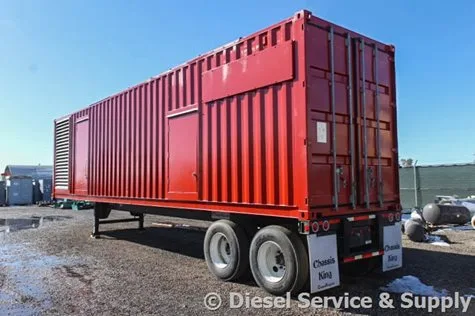Power Outages in Modern Times
Power failures now mean more than just a lack of light or the inability to use household appliances. They signify a disconnection from the world, disrupting businesses, critical tasks, and communication, often leading to significant financial and reputational damage.
Electrical Generators as Backup Power Solutions
The reliance on electricity has made backup power solutions essential for homes and businesses. Electrical generators, which convert mechanical energy into electrical energy, ensure power continuity during outages. Depending on requirements, generators are classified as Portable or Stationary.
Portable Generators

Features and Characteristics
- Temporary Use: Portable generators are not designed for permanent installations.
- Run Time: Operates for less than 12 hours.
- Power Output: Ranges from 500W to 17.5kW.
- Fuel Options: Gasoline, diesel, biodiesel, propane, or natural gas.
- Ventilation: Air-cooled; must be operated outdoors with proper ventilation.
- Setup: Requires manual setup, including hauling, plugging in, and refueling.
Advantages
- Cost-Effective: Less expensive compared to stationary generators.
- Compact and Lightweight: Easy to store and transport.
- Versatile Applications:
- Residential use (lighting, refrigerators, sump pumps, medical equipment).
- Outdoor activities (camping, motor homes, recreation vehicles).
- Temporary power at construction sites and farms.
Disadvantages
- Limited Capacity: Not suitable for high-power or long-duration needs.
- Noise: Lack of sound insulation makes them noisy.
- Weather Vulnerability: Requires protection from rain, snow, and other elements.
Stationary Generators

Features and Characteristics
- Permanent Installation: Hard-wired into the main electrical distribution panel.
- Automatic Operation: Uses an automatic transfer switch for a seamless transition during outages.
- Power Output: Supports high power levels ranging from 3kW to several hundred kilowatts.
- Continuous Operation: Capable of running for extended durations.
Advantages
- High Power Capacity: Meets the needs of businesses and large properties.
- Automation: Ensures minimal disruption with automatic start and stop.
- Reliability: Designed for continuous use and long-term performance.
Maintenance Requirements
- Transfer Time: Typically 10–30 seconds; requires a UPS to ensure uninterrupted power.
- Routine Maintenance: Requires motor oil changes every 50–100 hours of operation.
Choosing the Right Generator
Factors to Consider
- Portable Generators:
- Best for temporary, low-power needs.
- It is ideal for cost-conscious users with infrequent or short-term requirements.
- Stationary Generators:
- Suitable for high-power, long-duration needs.
- Perfect for businesses and facilities requiring seamless power transitions.
For additional guidance, explore our article archive for tips on buying used generators, installation guidelines, and safety practices.